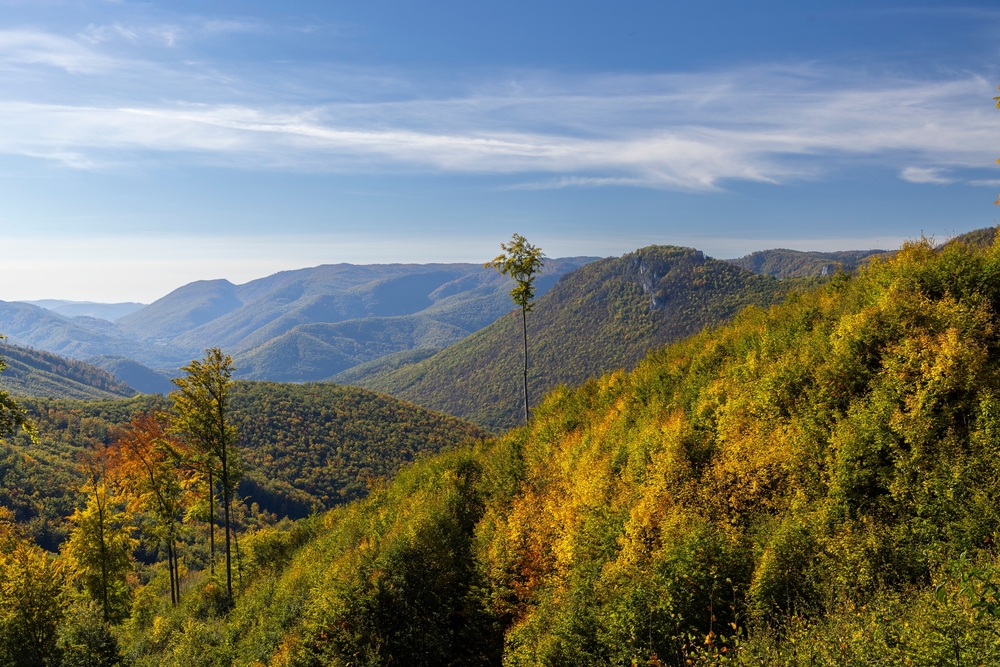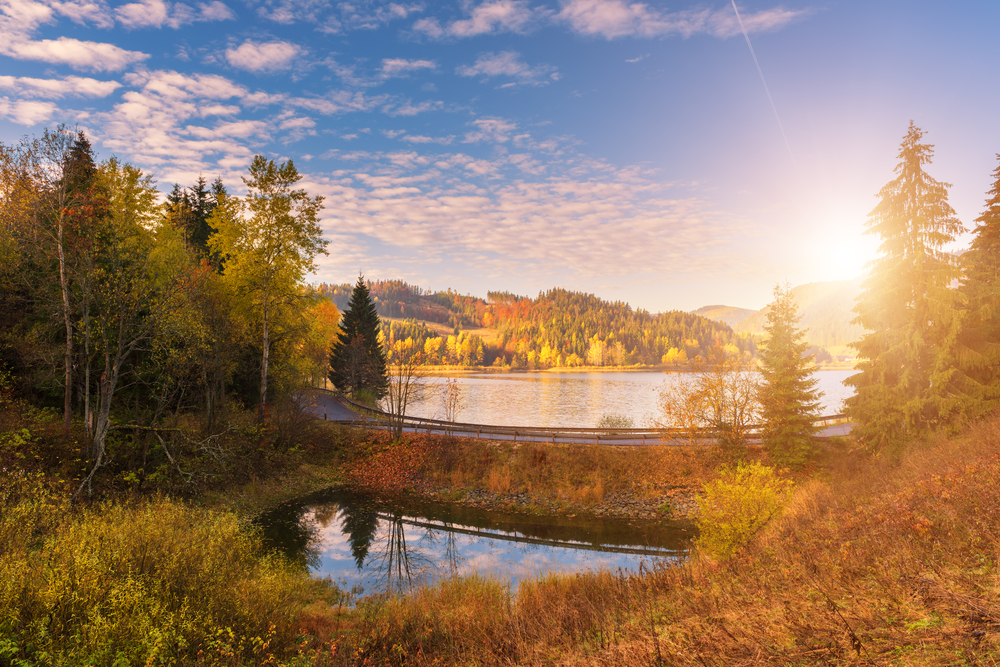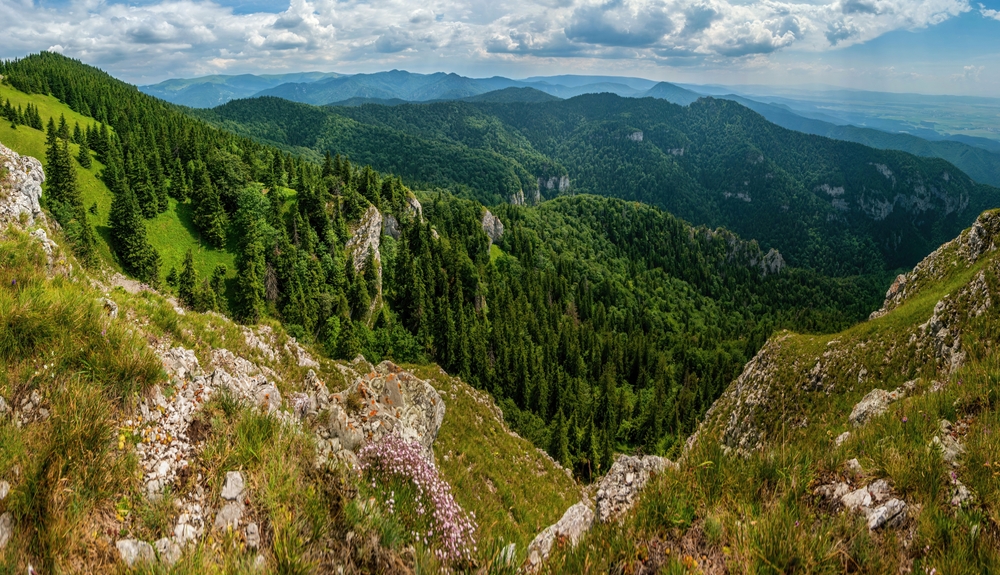Muránska Planina Overview
Muránska Planina National Park, known locally as Národný park Muránska planina, is a protected natural area in central Slovakia. The park covers approximately 82 square miles (213 square kilometers) and is situated in the Slovak Ore Mountains, spanning the Banská Bystrica and Košice regions.
Established in 1997, it is recognized for its diverse karst landscape, dense forests, and remarkable biodiversity. The terrain is characterized by vast plateaus, deep valleys, rugged limestone cliffs, and an extensive network of caves. The Muránska Planina plateau, reaching elevations of around 4,026 feet (1,227 meters) at Fabova hoľa, is a defining feature, offering breathtaking panoramic views.
Notable geological formations include the impressive Wailing Wall (Plačlivá stena) and the remarkable Muráň Castle ruins perched on a steep limestone outcrop at 3,500 feet (1,070 meters), which provides a glimpse into the region’s medieval history.
The park is dominated by mixed beech and fir forests, interspersed with alpine meadows and scattered spruce stands. These meadows, known locally as “poloniny,” are seasonally adorned with a colorful array of wildflowers, including orchids and edelweiss.
The karst topography has also given rise to over 250 caves, though most remain inaccessible to the public. One of the most famous is Bobačka Cave, known for its impressive speleothems. Numerous streams and small waterfalls dot the landscape, contributing to the park’s pristine and dynamic ecosystem.
Muránska Planina National Park is home to a remarkable variety of wildlife. Among its most famous inhabitants is the endangered Hucul horse, a rare and hardy breed that has been semi-wild in the area for centuries. Large carnivores such as the Eurasian lynx, brown bear, and gray wolf roam the dense forests, while the European wildcat and red deer are also commonly sighted.
Birdwatchers can spot species like the golden eagle, peregrine falcon, Ural owl, and the black stork, making the park an important avian refuge. The combination of high-altitude meadows and forested valleys ensures a rich diversity of both mammal and bird life, making it an excellent destination for wildlife enthusiasts.
A key highlight of the park is the Muráň Castle ruins, one of Slovakia’s highest castle sites, offering not only historical intrigue but also incredible views of the surrounding landscapes. Visitors can explore a network of hiking trails, including the popular route to Poludnica or the path leading to the Veľká lúka meadow, where herds of Hucul horses can often be seen grazing.
The park is also known for its cycling trails, horseback riding opportunities, and cross-country skiing in the winter months. The traditional mountain chalets, such as Zbojská, offer a taste of local Slovak culture and cuisine.
Conservation efforts in Muránska Planina have been largely focused on preserving its fragile karst ecosystem and protecting its large carnivore populations. Sustainable tourism initiatives, including marked trails and visitor education programs, aim to minimize human impact while allowing for responsible exploration of the park.
The successful conservation of the Hucul horse has been a major achievement, ensuring the survival of this unique breed. However, challenges persist, including illegal logging and habitat fragmentation, requiring continued conservation efforts and monitoring.

















































































